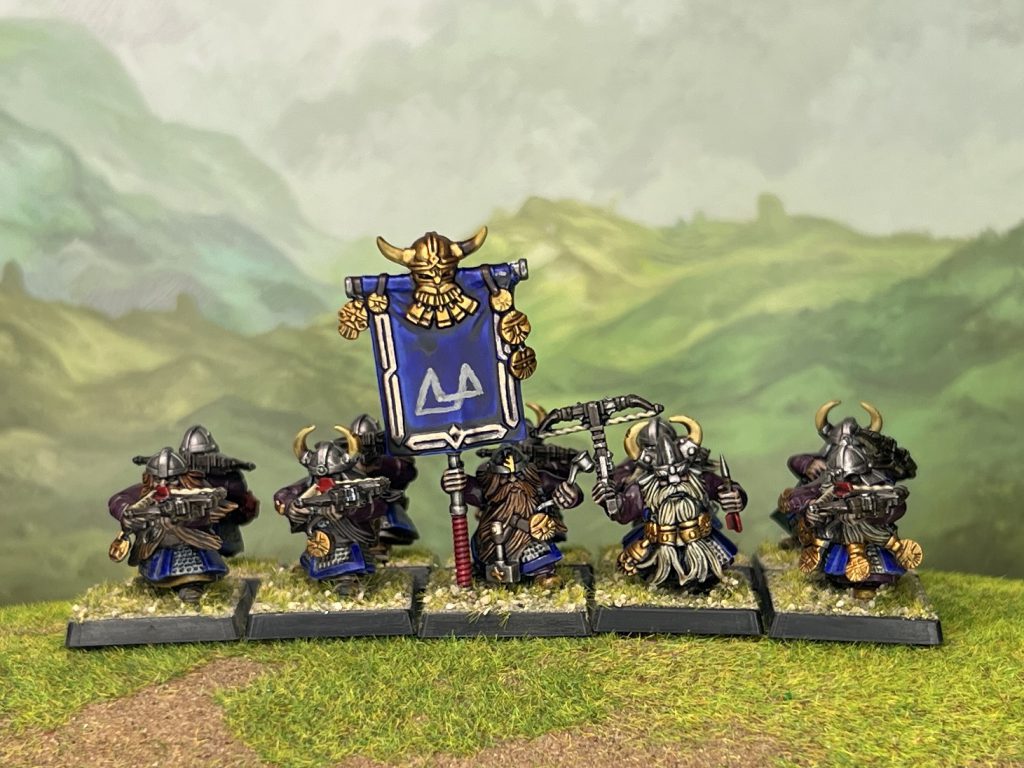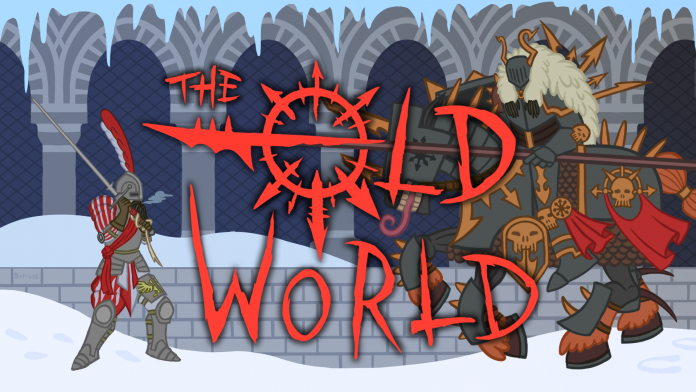With a new edition of a rank and flank game comes the question: how many ranks is the right number? This will vary drastically between player, army, and unit but for volley firing arrows it’s a little easier to answer. Probably.
A month or so in to Old World being released and one thing has been incredibly clear to me, a dwarf player: shooting is not what it used to be. Very broadly speaking it’s not as potent as some previous editions, artillery doesn’t hit quite as hard as it used to, and units such as Thunderers just aren’t getting the number of hits they once did. That’s a good thing, to be very clear. This is a rank and flank fantasy combat game, and like any rank and flank game, when shooting becomes a consistent way to win before the enemy reaches you that just results in a bad game for at least one player involved. It often doesn’t involve tact or skill, just list writing, deploying, and rolling dice. Boring!
Shooting still does exist of course in nearly every army list and is still very useful, as removing a few models or a full rank from an enemy unit while you’re getting charged is very impactful. More importantly, giving your opponent a very good reason to move towards you is all the reason you’ll need to include that bolt thrower or archer unit into your list.
Who Gets to Shoot?
If you’ve never looked at any edition of Warhammer Fantasy Battles then the way line of sight is determined might seem odd. Old World is not a “true line of sight” game that has you bending down to eye level of your minis to determine if they can “see” an enemy. Instead it’s much simpler: draw a straight line from your unit’s front arc to the target unit, and if there is nothing in the way (such as terrain or other models) then you have line of sight. A unit’s vision from their front arc is a 90 degree angle; some units such as chariots or skirmishers instead have a 360 degree line of sight due to their adopted formation or other special rules. Skirmishers, importantly, do need to draw line of sight through gaps in their own unit still from each individual model so be careful with placement.
Big Things and Hills
There are exceptions of course! Large targets are so large that other non-large-targets do not block line of sight to them. A few other dudes are not going to stop you shooting at a massive giant stomping across the table! Units sitting on top of hills don’t have their line of sight stopped by units on lower levels than they are; the opposite is also true to seeing units on top of hills. Having a height advantage is big in Old World, and between combat resolution and line of sight there’s good reason to have hills dotted around a table.
Very importantly, line of sight is also blocked by models within the same unit! A block of handgunners will only ever get to fire with their first rank unless they’re on a hill when you get to fire with two ranks instead. Smaller units of just ten ranged models, or even fewer in some cases, are very easy to simply line up so that they can all shoot. Larger units become more cumbersome and unwieldy however.

Bows and Arrows
By far the most common ranged weapon in the game is the simple-but-effective warbow. A common weapon that fires 24″ at the user’s Strength, has no AP, and its only special rule is volley fire.
Volley Fire is baked into both longbows and shortbows as well, so whatever kind of bow your unit carries (not crossbows) you’ll be able to rank up tighter and still fire off a large number of shots. Volley Fire allows the unit to fire with their normal first rank (or first two if on a hill) and then with half of each rank behind rounding up. For example if you have a unit of ten warbow-carrying archers arranged into two ranks of five models each then you’ll get to fire with eight of them: The first full rank of five, and then half of the rank behind rounding up to three. Do keep in mind that each model must still have range to the target!
Larger Units and Ranks…
As above a nice small unit of five to ten models is very easy to set up to allow all models in the unit to have line of sight and shoot. So instead let’s think about a unit of twenty archers and how to get the most number of shots. You could of course still line them all up in a single rank straight across, but that’s going to be taking up a minimum of fifty centimetres of your deployment zone/portion of table. For the Americans, that’s nearly twenty inches. In other words: not far off half of your normal deployment zone!
If you happen to have a hill then the obvious answer here is to place them into two long ranks of ten models each. Which will probably work out and get you all twenty shots if the hill is long enough to hold them all aloft. If you’re unlucky enough to not have any hills within deployment or easy reach however then this is how many shots different formations will give. In many of the examples the last rank will be an incomplete number of models such as when ranking up to be six models wide where you’ll have three complete ranks of six and then two models in the fourth on their own, where just one of them will get to shoot. You can imagine them taking turns, for fun.
| Frontage | Ranks | # of shots |
|---|---|---|
| 10 | 2 | 15 |
| 9 | 3 | 15 |
| 8 | 3 | 14 |
| 7 | 3 | 14 |
| 6 | 4 | 13 |
| 5 | 4 | 14 |
| 4 | 5 | 12 |
| 3 | 7 | 14 |
The short answer here is that it hardly matters. We’re looking at the difference of twelve to fifteen shots from that unit of twenty and, obviously, odd numbers of frontage are better due to rounding up. Consider along with that most of the time your archers are hitting on a 5+ (or even worse) you’re looking at an average of maybe one more hit if you maximise your potential for that magical fifteen shots by stringing out. If you do string out, though, you might as well save yourself a little space and go for that nine-wide formation which gives you a second complete rank and then two chilling in the last rank hanging out firing off one shot between them each turn.
….Hills?
Now let’s place that unit on a suitable hill. This of course assumes they fit; we’re keeping it relatively simple here folks!
| Frontage | Ranks | # of shots |
|---|---|---|
| 10 | 2 | 20 |
| 9 | 3 | 19 |
| 8 | 3 | 18 |
| 7 | 3 | 17 |
| 6 | 4 | 16 |
| 5 | 4 | 16 |
| 4 | 5 | 14 |
| 3 | 7 | 15 |
You get more shots. That was always going to be the case since you’re getting to shoot with an entire second row before halving the number of models that are allowed to fire. Once again we’re talking about really only losing a shot or two, so just maximise for the hill that you have available to you and don’t worry too much about using more ranks to also fit some artillery up on that hill next to your archer unit!
Formation for Occasion
Like anything else in this game how you rank up your units will be determined by a number of factors not entirely in your control. Terrain and how many other units you have will determine how you rank your archers up much more than anything else. At least you can now use the tables and information here to know that, really, it hardly matters how you rank up your archers when you’re only losing one or two shots; it will be far more important that your models in that formation are in range and not strung out too far back.
Have you been using volley fire in your games? Have you even gotten to play any games with it yet? Do you have opinions on terrain or how line of sight works in this edition? Leave us a comment below or email in to contact@goonhammer.com.


